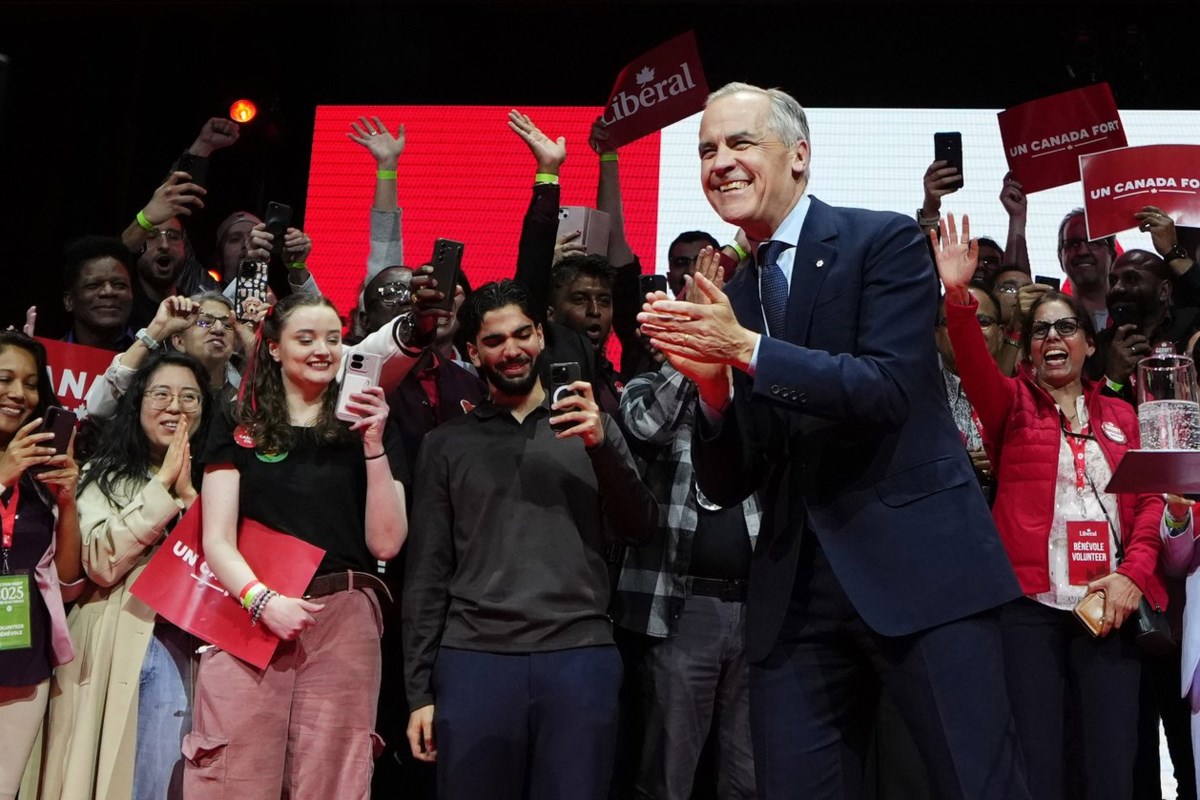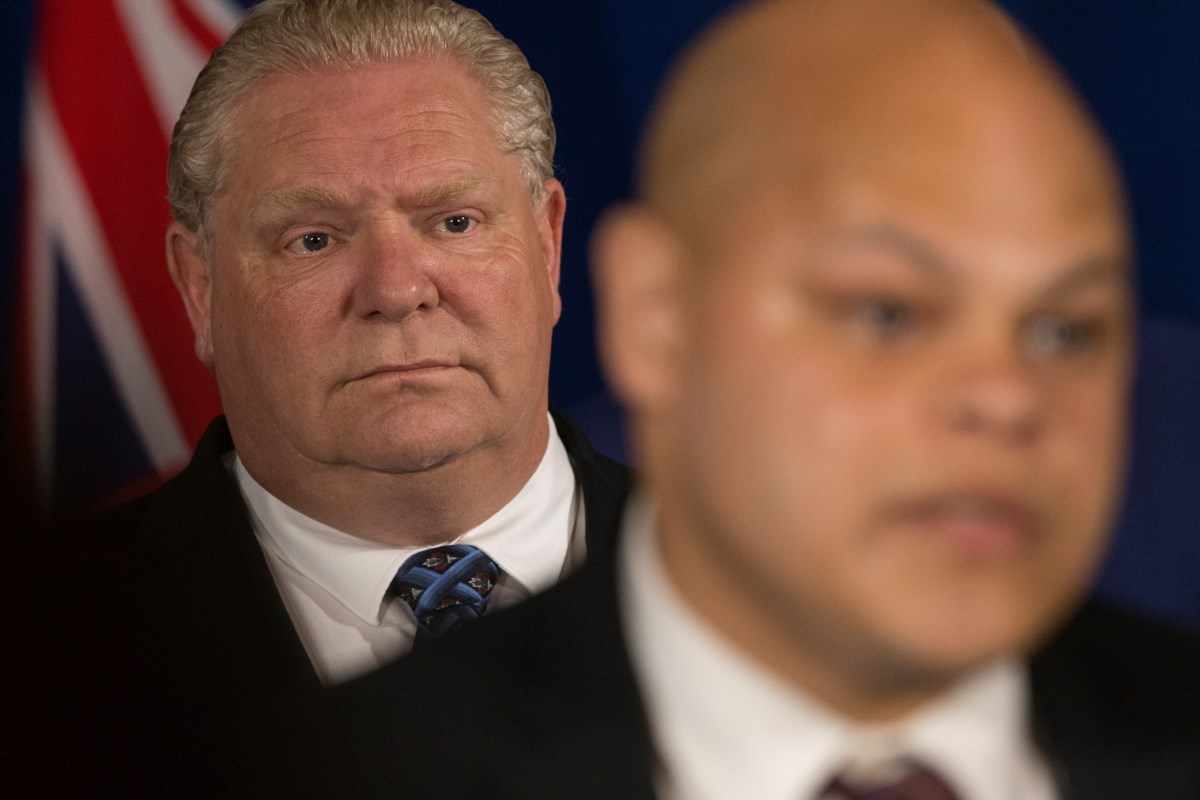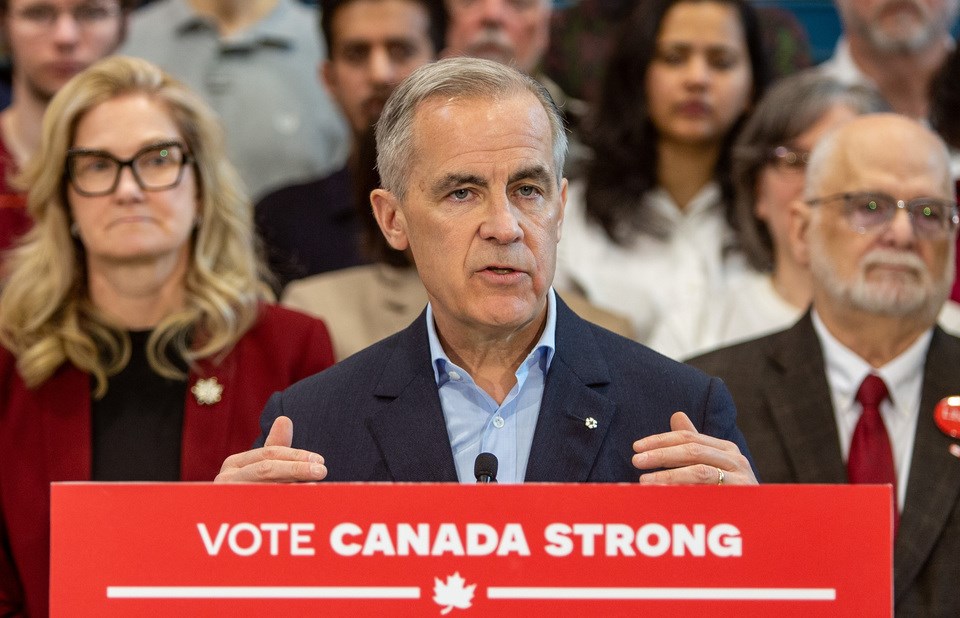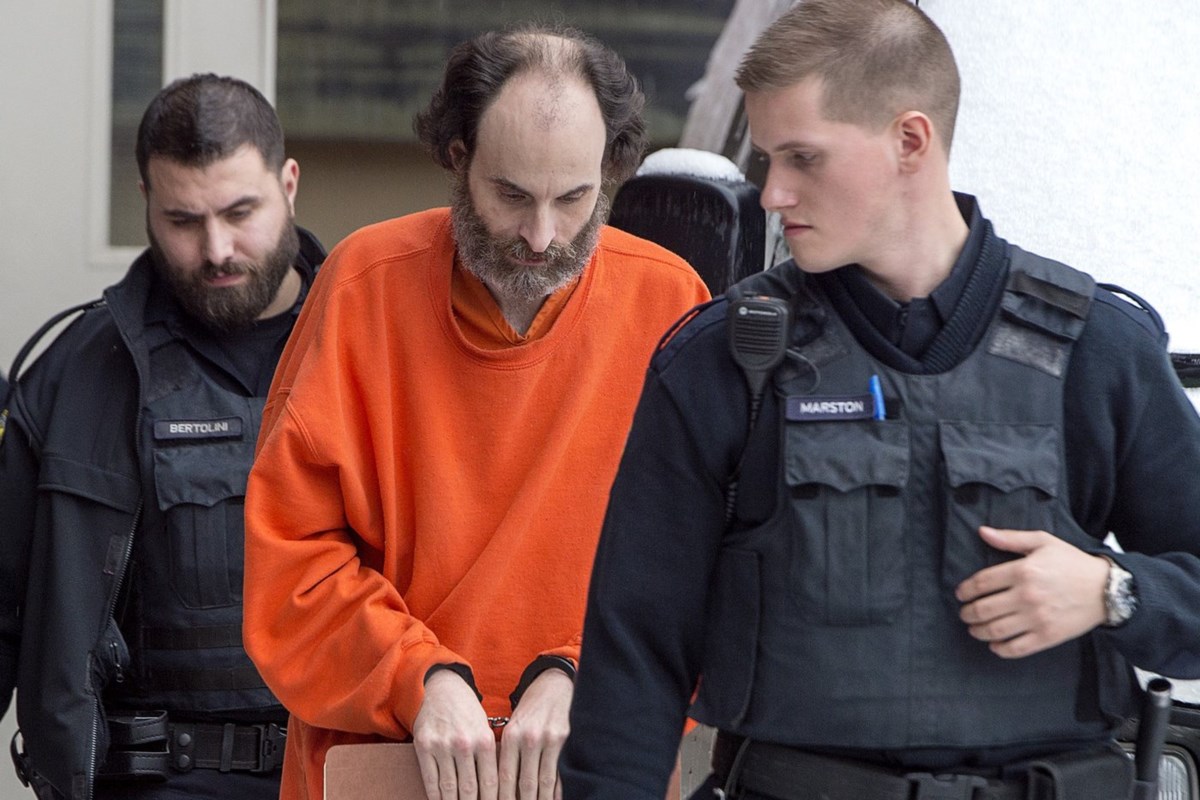After 100 days, is JD Vance Trump’s attack dog, or just a rabid dog foaming at the mouth? Today in Ohio

CLEVELAND, Ohio - What has JD Vance accomplished in his first 100 days as vice president? We’re talking about whether President Trump’s sidekick is attacking on the global stage as he follows his master on Today in Ohio. Editor Chris Quinn hosts our daily half-hour news podcast, with editorial board member Lisa Garvin, impact editor Leila Atassi and content director Laura Johnston. You’ve been sending Chris lots of thoughts and suggestions on our from-the-newsroom text account, in which he shares what we’re thinking about at cleveland.com. You can sign up here: https://joinsubtext.com/chrisquinn. Here’s what we’re asking about today: Plenty of people have fears of where our economy is going as Donald Trump recklessly plays with tariffs, but one Northeast Ohio employer is betting big on the future. Who is it, and what’s the bet? As most of the nation hears about Donald Trump’s first 100 days in office, reporter Sabrina Eaton took a look at JD Vance’s. What did she report? We have our first independent look at the financial projections the Cleveland Browns have used to justify the state of Ohio borrowing $600 million to pay for a covered stadium in Brook Park. It’s not rosy. Meanwhile, the Washington Commanders have proposed a giant stadium deal in Washington DC. How does it compare to what the Browns propose? Is Ohio in for a binge of school districts selling school buildings? We have an election coming up next month, including a statewide ballot question. Why are half of Ohio’s elections offices going back to paper poll books for this one? Why is Michigan’s marijuana still so much cheaper than the weed sold in Ohio? It’s been 10 months since Mayor Justin Bibb’s driver ran a red light and crashed, with the mayor in his car. Can anyone explain why this guy has not been ticketed or disciplined? With the budget of Ohio libraries under assault by the Ohio House, we took a look at how beloved these institutions are. What are the numbers? We have an Apple podcasts channel exclusively for this podcast. Subscribe here. Do you get your podcasts on Spotify? Find us here. RadioPublic is another popular podcast vehicle, and we are here. On PodParadise, find us here. And on PlayerFM, we are here. Read the automated transcript below. Because it’s a computer-generated transcript, it contains many errors and misspellings. Chris Quinn (00:00.707) We’re still catching up on news from the week we’re away. I expect we’ll be doing it all week, but we also have new things to talk about from Monday. It’s Today in Ohio, the news podcast discussion from cleveland.com and the Plain Dealer. I’m Chris Quinn here with Leila Tassi, Laura Johnston and Lisa Garvin. And Laura, plenty of people have fears about where our economy is going as Donald Trump recklessly plays with it. But one Northeast Ohio employer is betting big on the future. Who is it? What’s the bet? Laura (00:33.405) It’s Progressive, Progressive Insurance. And unlike a lot of companies, Progressive has really embraced this idea of hybrid and remote work. Remember, we’ve talked about that they sold off a bunch of their buildings in Mayfield, and they’re really preparing for the future. They’re looking to hire 12,000 new employees all over the country. We’re talking about claims, customer care, information technology, analysts, jobs, legal and corporate roles. And they describe this as... the company’s commitment to flexible work arrangements. So they’re offering remote hybrid and in-office opportunities. They say Progressive continues to prove that our culture is not defined or limited by our physical spaces. By having a flexible workplace approach, it not only allows us to meet the needs of our current employees, but to also reach job seekers where they are. And Progressive regularly ranks at the top of our top workplaces list, which will be coming out again in June. So we’ll have to see where they are this year, but they’re also number 16 in the Fortune 100 Best Companies to Work for list, and that’s the eighth year there. So it is known as an employee-friendly company, and they’re really prepping for some big growth. Chris Quinn (01:43.769) Does it feel like they might be reducing their presence in Northeast Ohio and spreading out across the country for the longest time? Those two campuses over there were packed with progressive employees. Now one is being abandoned. The other one has fewer people in it. Is this kind of the end of progressive’s big presence here? Laura (02:05.755) I think that’s a good question because they are hiring from across the country, but they do operate across the country, right? So you need people all over the place if you’re going to be a national insurance company. They’re hiring attorneys in California, Georgia, New York, Florida, and Texas. Obviously, you have to be able to pass the bar where you’re going to practice. They’re looking at territory sales representatives, data scientists, production print mail specialists, but they haven’t said anything about leaving Northeast Ohio, obviously that would be a huge blow to our economy and our pride here because obviously we have progressive field where our baseball team plays. They are a big corporate citizen in Cleveland. And I mean, I feel like the city kind of embraces progressive and flow. Chris Quinn (02:52.739) But there was nothing in what they announced that had an Ohio reference, which should be concerning. It would be interesting if we could get them on the horn and ask them what this means for Northeast Ohio. Laura (02:58.245) Laura (03:06.735) I would be interested too, but like some other Cleveland companies, they are not the most forthcoming when it’s like here, have a candid conversation with our executives. Chris Quinn (03:18.041) All right, you’re listening to Today in Ohio. As most of the nation hears about Donald Trump’s really horrible first hundred days in office, reporter Sabrina Eaton took a look at JD Vance’s. What did she report on the Ohioan? Lisa. Lisa (03:32.878) I love Sabrina’s lead on this story. She basically calls him a high profile attack dog, which is a very apt description of his first 100 days as vice president. He’s been very visible on the world stage and very aggressive, obviously building his 2028 presidential resume. And he has a full domestic and international travel schedule even now. We talked to North, a University of Dayton polyscientist, Christopher Devine. He says, Vance has far more influence than Mike Pence ever did. He aligns much more with Trump than Pence did, but vice presidents are only as powerful as the president allows, but it seems like he’s off the leash right now. Among his highlights or lowlights, however you look at it, he coaxed former Senate colleagues to support Trump’s cabinet nominees and he cast the tie breaking vote to confirm the disastrous defense secretary, Pete Hegseth. He also was finger wagging at Ukraine president Volodymyr Zelensky in a White House meeting and said he wasn’t respectful or thankful enough to the U.S. In his first international speech, he chided Europe on defense spending and free speech, and he’s been attacking the legitimacy of the judiciary and any checks on Trump’s decisions. And of course, we can’t forget his unabided trip to Greenland and dropping the OSU trophy. Chris Quinn (04:53.879) I see. I think the attack dog, I see him more as the rabid dog foaming at the mouth, having his brain slowly get damaged because he’s so off the mark. He doesn’t come across well. He comes across as just a bloviating loser who is in complete servitude to his master. It’s a terrible look for Ohio to have this guy. He doesn’t really stand for anything. He’s all over the map and He lies left and right. I he makes ridiculous statements over and over. It’s always interesting to see somebody that that takes one of his statements and go, OK, let’s fact check this. And you just go through the whole thing and it’s made up nonsense, just like when he was talking about the Haitians in Ohio. So in his mind, he’s probably had a good 100 days. But for America, for Ohio, it’s been a terrible 100 days. He is a terrible representative of what this state is about. Lisa (05:53.016) Well, and these horrified leaders all over the world, you know, for being so aggressive and saying, you’re not doing enough and, you know, we’re supporting you on our backs and you should do more. And that’s just not the way to treat long time allies. Chris Quinn (06:06.455) No, and look, one of the worst looks were when he and Trump sandbagged the Ukraine president in the Oval Office. it was sleazy thing to do. It’s not done. You don’t do that kind of thing with world leaders. But there he was, Trump’s toady, making sure he leans in to support his boss. It was a very ugly image for what America is about these days. You’re listening to Today in Ohio. We have our first independent looks at the financial projections the Cleveland Browns have used to justify the state of Ohio borrowing $600 million to pay for a covered stadium in Brook Park. Layla, they’re not rosy, but both have some pretty huge flaws. And I don’t feel like we have a good picture today any better than we did before these came out. Leila (06:54.561) Yeah, this wasn’t rosy at all. The state’s nonpartisan budget analysts released their take on this and they’re pretty skeptical of the Browns’ economic plans. The team’s been saying this new stadium would draw 1.5 million visitors a year and create thousands of jobs, but the analysts couldn’t even verify those numbers because the Browns haven’t made their full study public. And what they could see raised eyebrows. They said the visitor estimates seem overly optimistic, especially since even the most successful NFL domes nearby, like the ones in Detroit or Indy, don’t come close to hosting that many non-football events. And even in the best case scenario where every Browns game sells out and the stadium adds big concerts and other events, the total still would fall far short of 1.5 million visitors. And the jobs, it turns out, A lot of them would just be relocated, not new. So instead of economic growth, it’s more like moving pieces around the board. And the report also points out that the job numbers rely heavily on economic multipliers, which have a long history of being used to exaggerate benefits from stadium projects. And then there’s the legal issue. Lawmakers are pitching $600 million in state bonds to help fund this. But the state analysts say those bonds might not even be constitutional. They argue that the way the funding is structured It might not meet the legal standards for this kind of public borrowing. If lawmakers pass it, a judge would have to weigh in. So yeah, the report casts serious doubt not just on the Brown’s numbers, but on whether this plan even can or should move forward. Chris Quinn (08:29.175) Yeah, Tom Suttis wrote a wonderful piece looking at the legality of it. The bonding mechanism they’re using when it was created decades ago was never intended for something like this. I was disappointed, though, that this assessment didn’t look at all at the escrow, the $50 million in escrow the Haslams are putting in as to whether that would cover any shortfalls. From the beginning, the Haslams, as they’ve laid this out, have said, You know, you can say these are rosy, but there’s a huge buffer. So even if they don’t come in anywhere close, we’re still OK. And I just don’t feel like any of that was looked at. I found it odd that they kept saying that the Hasm’s did not make their financial studies available because I feel like the Hasm’s have been showing that thing all over town. So I’m not clear on what exactly they feel like they’re not getting. But we’ve said from the start that their attendance numbers were ridiculous. We went and looked at what was happening. in other markets. And we’ve said from the beginning, they’re not going to have the events they’re talking about. They’re not going to have the crowds they’re talking about, that they have built in big gigantic numbers. But then the governor’s office came out with its own study, which we’ll be doing more analysis on today. But if you read it, it seems like it had loaded language throughout and it was much more of a Leila (09:52.175) Chris Quinn (09:53.451) Mike DeWine argument for his plan to tax the sports betting companies, a brilliant plan that the Ohio house under Matt Huffman refuses to do. And you wonder why, but, but I’m not sure that we’re going to be able to take that credibly because Mike DeWine is pushing for something. And I just feel like there’s still, despite these releases, huge mysteries here. Leila (10:15.641) That’s true, but I kind of feel that even if that’s the case, it doesn’t really change the core takeaway of what we learned from this story, which is that the Browns economic projections are not really holding up to scrutiny because what did it say? Something like they would need to hold 24 major events outside of Brown’s games and sell out of all of them. And that’s insane to meet the numbers that they’re projecting on this. I just now I feel like I’ve got no faith in this plan. Lisa (10:33.836) Leila (10:45.908) And whether the stadium is funded through bonds, betting taxes, or magic beans, the question remains, are taxpayers getting a good return on this massive investment? Chris Quinn (10:55.993) Well, again, the way it’s set up with the state, it’s not supposed to be the taxpayers at all. It’s supposed to be paid back. And that’s why the House put in the 50 million of escrow. The other thing you’ve got to remember is that the attendance is only part of it. They’re going to be getting a ton of revenue from the parking, from the airport parking. They’re going to have a hotel there that serves the airport. There’s a whole bunch of revenue sources involved in this, some of which would accrue to the state side of this. I do feel like this thing is heading more and more to the sports betting companies, despite Matt Huffman’s resistance to it because it’s just such a clear no brainer. And that would negate a lot of this part of the discussion. We’ll be looking more at this today because we got both of these in very short order yesterday. We did our best to analyze them, but we need to dig in deeper. You’re listening to Today in Ohio. Meanwhile, the Washington commanders have proposed a giant stadium deal in Washington, DC. Laura, how does it compare with what the Browns propose? Laura (12:00.507) Well, this looks like a much better deal for taxpayers and fans in Washington, D.C. So the commanders in the city announced their deal on Monday. This is an agreement to build an enclosed football stadium that costs about three point two billion dollars on the site of the former RFK stadium that was last used by this team in 1996. So the commanders are the kind of the opposite of the Browns. They want to move back into the city from Landover, Maryland, whereas obviously the Browns want to move from downtown Cleveland to suburban Brook Park. So The commanders are putting up $2.7 billion of their own money. That’s twice as much money toward the stadium as the Browns have pledged for Brook Park. And then we’re looking at a public commitment from Washington at about $1.06 billion. That includes $500 million to prep the site for construction. And that’s using a business tax that had been used to pay for the baseball stadium. There’s also three hundred and fifty six million dollars for parking garages and two hundred two million dollars for roads and other infrastructure improvements. I’m going to point out that two hundred and two million dollars is a whole lot more than the Browns think they need to add an interchange and improve the area around Brook Park with the mess of seventy one and four eighty, which they’re only. Chris Quinn (13:14.019) Well, hold hold on, hold on. I don’t think the brands have included an interchange in their estimate. Their estimate is based on some changes. We believe it needs an interchange that would cost more. Laura (13:17.293) Okay, okay, I that’s the point. Laura (13:25.147) Thank you for clarifying, but they’re looking at something like $80 million for that. So this looks like a better deal. And so when you look at the Haslam saying, we’re being so generous. We’re giving all of our own money, and we’re not asking for that much from the taxpayers. You’re looking at another team that’s willing to give a whole lot more. Chris Quinn (13:46.561) Okay, but we keep getting away from the idea that in the Hasm’s deal if it goes as planned, we don’t pay for it. We’ve paid for everything up to now. The taxpayers have always been on the hook with Gateway. We’re still on the hook. In DC, for part of that money, the taxpayers are on the hook. What the Hasms are trying to show is we’re putting in 1.2 billion and the 1.2 billion coming from local and state Laura (13:59.377) Chris Quinn (14:15.245) that’s going to get paid back mostly from the profits and the revenue on the stadium. And that that’s the balance. I mean, it’s not just what Washington’s putting in. It’s how much local taxpayers have to pay. I don’t want to pay anything for the stadium. I don’t go to it. I’m probably never going to go to it. I don’t want a dollar coming out of my pocket to pay for it, unlike all the previous stadiums. And that’s the comparison we need to look at. It’s not just the total dollars. It’s who is paying for this thing. Laura (14:46.865) Right. And in the Browns case, what they’re saying is it’s going to be a new tax on tickets in Brook Park. It’s going to be a rental car fee. It’s going to be the people who are parking there. It’s going to be the users of that rather than just making us generally obligated from the city and county coffers. So I agree. That’s an important distinction because I’ve been to one Browns game in my life and I don’t know that I’ll ever go to another. So I don’t want to pay for this. And you’re right. It’s just that what we just talked about Lisa (14:47.988) Lisa (15:07.182) I think one round of my life and I don’t know that I’ll ever go through them. So I don’t want to think that you’re right. It’s just that what we just talked about, those pictures, are they overly rosy? And I know we’re talking about the hazardous paint or the cost overrun. I have the theory of anything that has a fine angle. Laura (15:16.527) those pictures, are they overly rosy? And I know we’re talking about the Haslunds paying for the cost overruns, but I’m just leery of anything that has assigning any kind of obligation. Chris Quinn (15:28.109) Well, the- the others- Go ahead, Liza. Lisa (15:28.226) Well, they need to. No, no, I was just going to say, mean, I agree with you, Chris, but but doing it all with sports gambling revenues instead of this hybrid weird thing where they use the gambling revenues to pay off the bonds, the just using gambling revenues creates a permanent fund for all Ohio teams. And remember, this was supposed to fund youth sports, but that seems to have fallen off the board here. Chris Quinn (15:52.781) No, no, that’s still part of the discussion. And what I like about the sports betting tax is this. The state would pay 40 percent of the stadium, which reduces the local contribution. So so if the owners pay 50 percent, the state gets 40 percent out of the betting tax, whether you borrow against it or use it as the cash comes in, then the locals are only in for 10, which is the best deal ever, especially if you can use revenue off the project to pay it. I think the whole thinking on sports stadiums needs to change dramatically so that we’re not paying for it. mean, look, Cleveland and Cuyahoga County can’t afford to build stadiums. They’re broke. They can barely do what they’re doing. If we do the sports betting tax, mean, DeWine doesn’t want to borrow against it because then interest consumes a lot of the money. He’d rather just take the money in and pay it out as it comes in. It sounds like the Senate is thinking, well, let’s borrow against it and then we can do all our stadiums and we still have lots of money. Lisa (16:46.424) Chris Quinn (16:52.569) Nobody that I’ve heard of has said we’re not going to continue to put money into local youth sports. That has to be a part of this. Other people have to benefit. But that’s why I love this plan, because it gets away from poor cities paying for the stadiums that are used by entire regions. And we’ll have to see. I’m not sure. mean, the commanders are putting more of their own money into a more expensive stadium. whether that’s stadium is a better deal for the Washington, D.C. than the ultimate deal we get in Cleveland remains to be seen. And that’s all that matters to me is protecting the taxpayer from having to pay anything for this. Laura (17:34.672) Chris Quinn (17:36.141) You’re listening to Today in Ohio. Lisa, is Ohio in for a binge of school districts selling their school buildings because of state law? Lisa (17:45.432) Well, there are some proposals in the budget that might make this an issue. So last week, the Educational Service Center of Northeast Ohio had a briefing for Ohio school superintendents. They’re concerned with potential changes to the building sale law. Currently, it requires school boards to offer unused buildings for sale or lease to charter or STEM schools within their district boundaries with a preference to high performing charter schools. A building is considered unused if it’s not used for one year. or the less than 60 % of that building is being used for instruction. Now, Governor DeWine’s budget proposal would make it easier to designate these buildings as unused. It would be if enrollment is under 60 % of what the school is designed for originally, or under 60 % of enrollment for the last 10 years. The House did remove that from the budget. Who knows what the Senate may do with it? Berkshire School District Superintendent John Stoddard, this is in Geauga County. He says, really only local school boards should be able to control and decide how their buildings are used. He says, buildings used for things like career tech, like auto repair, cosmetology, and so forth, could be forced to close if this law changes. The law says the district is not obligated to accept bids lower than fair market value, but DeWine’s proposal would change it to property value as an educational facility, which would probably be a lower price, but the house also removed that as well. Chris Quinn (19:14.905) There are all sorts of problems with this. And I think the undercurrent is they’re trying to provide help for charter schools to take more of our money and give it to private operators who are not held to the same standards. But what really is bothersome about this is we pay for those schools. The school districts come to us and they ask for a tax increase so they can borrow money and do their school construction. So we, the school district residents, own those buildings. And now we got the big bad state telling us what we have to do with our property. That seems wholly inappropriate. The state didn’t do this. This is largely our money. We are the owners as the taxpayers. We alone should decide what the best use of those buildings is. And what they’re doing is just trying to destroy public schools by creating more opportunities for charters. Lisa (20:08.022) Right, and the house version of the budget would allow private schools to purchase school district buildings, which is a whole nother kettle of fish. Chris Quinn (20:17.589) I this is not that far away from them coming to you and saying, you know, your your house needs paint. Your sidewalks are cracked. You have to sell it. You have to sell it for whatever we say the market is. These are owned by us, the taxpayers of the districts, not the state. The state is really violating some local home rule issues here by jamming its fingers into this. And people should be screaming about it. This will hurt neighborhoods, too. This will end up bringing in fly by night. operators into neighborhoods and wrecking them. Schools are centers of neighborhoods. It should be wholly up to the school districts what to do with them. You are listening to Today in Ohio. Laila, we have an election coming up next month, including a statewide ballot question. Why are half of Ohio’s election offices going back to paper poll books for this election? Leila (21:09.443) Well, it all stems from a security issue that was flagged in Perry County. They had a new electronic poll book, basically a tablet that was used to check voters in. And during testing, they found what state officials called a violation of Ohio’s election security standards. That specific device was never used in an actual election, but it was enough of a red flag that Secretary of State Frank LaRose ordered a precautionary shift. Any county using that same model of poll book has to go back to paper check-ins for the May 6th election. So voters in about half of the Ohio counties will still cast their ballots electronically, but the check-in process will take longer. Poll workers will be flipping through those paper lists to find names and match the signatures just like the old days. The good news, though, is that the largest counties like Cuyahoga, Franklin, and Hamilton are not affected by this. They use different vendors and will keep using their electronic poll books as usual. But in Northeast Ohio, counties like Lorraine, Medina, and Portage are switching to paper for this one. Interestingly, Ashtabula County actually went back to paper poll works after 2020, and they never looked back. So now they’re helping train other counties on how to handle this switch smoothly. Chris Quinn (22:24.709) The paper poll books never seemed to be a hindrance in all the years they were using them. And I can’t imagine it’s going to be a problem with this election because no one’s going to vote. It’s one statewide kind of boring issue and very little else on the ballot except for some, I guess, school taxes. the electronic poll books are a fairly recent creation. I think we were still using paper polling books in the 2016 presidential election, right? Leila (22:52.707) Well, I don’t recall, but I imagine though, we’ve had some huge turnouts for presidential elections in recent years. I think that imagine how long those lines would be if they had to flip through polls, poll books like that. I want to say in 2016, they were not using, at least in Cuyahoga County, they weren’t using paper poll books. But I think it was the digital sign in and then they push the button and it matches up to your registration or whatever. Chris Quinn (23:14.648) Leila (23:20.825) But it’s interesting how one small glitch in a single county can ripple out to affect half the state. But it’s a good thing that this got caught early and before it affected the actual election. Chris Quinn (23:21.122) Chris Quinn (23:32.215) Well, yeah, if they could be hacked easily, then blocking that is important. You’re listening to Today in Ohio. Lisa, why is Michigan’s marijuana still so much cheaper than the weed sold in Ohio? Leila (23:36.333) Lisa (23:47.246) Well, I think the main reason is that Michigan’s been at it a lot longer. They legalized recreational marijuana in 2018, six years before Ohio did. So they had a much longer runway to develop their infrastructure and increase their capacity. Also, Michigan has no limits on grower license. They allow people to grow outside, which Ohio prohibits. So Michigan has almost 1800 cultivator licenses versus Ohio that only has 37 cultivator. recreational sales here began last August. Back then, the average flower price was $9.40 a gram. It’s now down to $6.30, but the Michigan average per gram is $2.29. So yeah, there’s quite a bit of difference in the way both states have approached it. NAR Cannabis, which is a company that sells in both states, a partner, Harrison... Carter says that Ohio’s indoor facilities will never be able to match Michigan’s outdoor production. They just have more product. So, you know, that’s, that’s an issue. Chris Quinn (24:53.529) Huh, it’s interesting that that’s what it comes down to. I imagine then there’s still quite a few people driving from Ohio to Michigan. That price difference would justify that people were buying in any kind of amount because it’s staggering how much cheaper it is there. Lisa (25:10.678) It is, mean, you know, and just as of March of this year, the average price in Ohio is $330 an ounce. Nationally, it’s 326. Michigan again, the winner at $290 an ounce. But also the widespread sale of intoxicating hemp in unregulated convenience stores and other areas is also an issue that’s taking away from legal dispensaries. And Senator Steve Huffman, a Republican from Miami County says, He thinks there’s going to be a committee vote this week that would limit that sale of, you know, intoxicating hemp products to dispensaries only and go under the same rules as marijuana. And Huffman says he sees on the horizon deregulating the cultivator industry within a couple of years, and that would bring prices down further. Chris Quinn (25:58.275) What do you think the reason is that Ohio requires it to be indoors? Is it security to keep people from jumping a fence and stealing some weed? Lisa (26:07.948) That’s a good question. I really haven’t found any information on that, but that’s probably part of the issue. Chris Quinn (26:14.455) Hmm, I wonder how many states have similar rules to Ohio might be worth exploring. You’re listening to Today in Ohio. It’s been 10 months since Mayor Justin Bibbs driver ran a red light, crashed, lied about why he was running that light all with the mayor in his car. Can anyone explain why this guy has not been ticketed or disciplined, Leila? Leila (26:35.573) That’s the million dollar question, Chris. Honestly, the answer is a tangle of bureaucracy and finger pointing and what looks an awful lot like foot dragging. Officer Demetrius Woods, who’s the mayor’s driver, ran a red light last June while ferrying Mayor Bibb downtown and crashed into a work van. Now nobody was hurt, but Woods was clearly at fault. Remember, he turned on his emergency lights as he flew through this light and lied about it. Chris Quinn (27:00.245) and lied about it. Yeah. Leila (27:03.041) And yet he was caught on camera. I mean, there’s, it’s just a mountain of evidence against him. And yet here we are, you know, 10 months later, he hasn’t been ticketed. He hasn’t been formally disciplined. So the city, first, the city sent the case to a special prosecutor to decide whether to issue a citation and nothing came of it. Internally, the disciplinary process got tied up because an anonymous complaint was filed with the office of professional standards, which triggered a separate review. That meant the police department had to pause its own process per union rules until all discipline could be handed out at once. Then that review stalled when the city temporarily shut down the Office of Professional Standards earlier this year, citing concerns that its director had improperly shared sensitive info. That director is now gone and the case is being reassigned again with a new review expected to go before the civilian police review board in June. And in the meantime, Woods is still driving the mayor. The police chief has said he violated department policy and even Mayor Bibb said Woods used poor judgment. But the city’s position is that officers don’t get ticketed for on-duty driving issues, just internal discipline, which in this case still hasn’t happened. So to answer your question, no one’s denying the crash happened or who was at fault. They just haven’t acted on it. Chris Quinn (28:20.567) Chris Quinn (28:25.557) It just undermines the people’s faith in the justice system when you give special treatment. If you ran a red light intentionally and you crashed into somebody, you’d be charged. There’s no way around it. He violated the traffic law and crashed into somebody. He should be ticketed for that. That’s an automatic ticket for reckless driving or whatever you want to pick. And the fact that it’s 10 months later and he’s scot-free, it’s just like when the Warrensville Heights mayor, Brad Sellers, you Leila (28:46.061) Chris Quinn (28:55.081) signed false documents to get a tax break and got caught and got charged. It took forever to resolve that case and he got a barely a slap on the wrist. He’s still able to be mayor. We keep seeing this over and over, whereas if it’s you or me, it’s automatic you’re going to get a ticket. And this is a stain on the mayor’s term. This is his driver and it looks like the mayor’s given him special treatment. There should be no special treatment. This should be resolved. Leila (29:23.523) Right. It’s got to have people wondering if this is how long it takes to address something that happened in broad daylight with a sitting mayor in the car. What happens when misconduct is less visible? It’s about whether transparency and accountability apply equally no matter who’s behind the wheel. Chris Quinn (29:41.937) There’s simply no excuse for it. He should be ticketed. He should be disciplined. He violated city policy. He violated the traffic law. And the fact that we’re sitting here 10 months later talking about it. And look, the only reason we’re talking about it is because of us. We said, you know, whatever happened to that case, that never came back. So we did the story to remind people that they’re giving this guy a free ride. I think that’s their goal. I think their goal is to make everybody forget about it and pretend it never happened. Shame, shame, shame. Did the guy sue the city? Leila (29:44.067) Leila (30:09.311) I’m shocked. I’m shocked that Bibb, you know, I don’t know. That’s a great question. Because he was like an older gentleman who is driving that work van, And I mean, for heaven’s sake, but you know, yeah, especially I’m sure he had damage to his vehicle. It’s terrible. And I’m shocked that Bibb keeps this guy as his driver, at the very least. Create the proper optics by moving him out and putting somebody else on that detail. Chris Quinn (30:19.096) He should sue the city. Chris Quinn (30:31.437) Leila (30:37.551) Otherwise, it creates the illusion or the impression that Bibb knew that this guy was behaving this way. Maybe he’d done it multiple times before, and so Bibb feels kind of bad that he didn’t want to throw him under the bus because he tacitly condoned it. So he buried it and let him continue on as a driver. At least that’s what it looks like. Chris Quinn (30:46.998) Chris Quinn (30:57.133) then say that. Then if that’s the case, say it. Come out and say, look, I’m not going to let this guy get ticketed. He was doing it at my orders. I’m in the wrong. That’s not what he said. He said he didn’t know. He had his head down, and this guy did it on his own. It needs to be resolved. Leila (31:09.209) Leila (31:13.025) I mean, that could explain that incident. That might have been true for that time, but, you know, he’s been his driver for a while. You think Bib never noticed when he ran a red light? It’s terrible. Chris Quinn (31:23.089) And the whole thing stinks. You’re listening to Today in Ohio. We’re going long again with the budget of Ohio libraries under assault by the Ohio house. The Ohio house is going after everything that matters. We took a look at how beloved these institutions are. Laura, what are the numbers? Laura (31:40.081) These numbers are staggering and we have them for the entire state. So if you’re interested in how your library stacks up, you can look them up on Cleveland.com. This story is from Anna Stavor last week. Northeast Ohio Library served nearly 170,000 meals and snacks to kids in 2023. They helped more than 6,300 students with their homework. They notarized documents. They assisted with passport applications. They gave one-on-one technology trainings. And they circulated more than 37 million physical materials to users all in 2023. It’s talking about e-using, reading e-books or downloading the audio to your phone, 14 million more materials. They shared 3.2 million items with other systems and hosted 39,000 on-site events for kids. These numbers, and this is huge part of our community, and we’ve talked about how important libraries are, not just... so that you can lend books and read them, right? But they have become centers of the community. They have 3D printers, they have work programs, they have community meeting rooms. And for decades, the reason we’re talking about this is that Ohio funded its public libraries by giving them a fixed percentage of the budget, 1.7 % of all general revenue tax collections. But this year, Republicans are saying, oh no, we really can’t afford that. So we’re gonna cut that back and we’re gonna give you money out of our... budget every year, but every other year, you’re going to have to come to us. And while they did come back and give a little bit more, and we’re talking about the same amount of money that they’re getting back in 2001. So they have not gotten increases. They’ve got about $496 million they sent then, $490 million now. So this is not growing. But I hate how these legislators are like, Well, we really need to cut back because our COVID grants run out and there’s so much uncertainty with the economy. It’s like, this has been in place forever. You cannot blame this on COVID. Chris Quinn (33:37.644) Chris Quinn (33:42.113) Yeah, they’re there. think they realized they made a big mistake here that the libraries are beloved. The numbers show how many people care about them. And they’re not sitting by quietly while this goes on. They have rallied people across the state to drill into the legislators. So you’re right. They gave a little bit back, but it’s still not what they’re due. But as this goes into the Senate, where maybe they’re a little bit smarter than what the House has shown it to be, that this may get resolved. The reason we did it was to show this is how many people you are messing with when you start attacking libraries. Laura (34:17.691) And how the thing is this wasn’t talked about beforehand. This kind of slid in the budget like so many other things, but the response was swift. These are librarians we’re talking about. These are smart connected people who mounted a campaign. They had it all over their social media and their websites and in their libraries telling their patrons, tell your representative how important this library is. So they mobilize quickly. People stepped up and talked back. And I think it is going to make a difference. Because they’re not asking for more money. Like we just said, they still don’t have enough money. Circulation has dropped 12 % in this time period of 25 years, while state population grew by 2.5%. And they would need about $690 million to match what they had 25 years ago. They just want what they’ve always been guaranteed, that 1.7 % of the budget, so they can continue to provide these very needed service for millions of people. Chris Quinn (35:15.929) Yeah. And again, complete secrecy. This is the hallmark of Matt Huffman as House Speaker so far. They keep doing things without holding any hearings or having any testimony and just jamming it down people’s throats with no announcement. And then we have to ferret it out and publicize it, which we will continue to do because people are telling us they’re grateful we’re here. That’s it for the Tuesday episode of Today in Ohio. Thanks, Lisa. Thanks, Laura. Thanks, Leah. Laura (35:20.324) Chris Quinn (35:42.969) Thank you for being here. We’ll be back Wednesday to talk about the news.



















